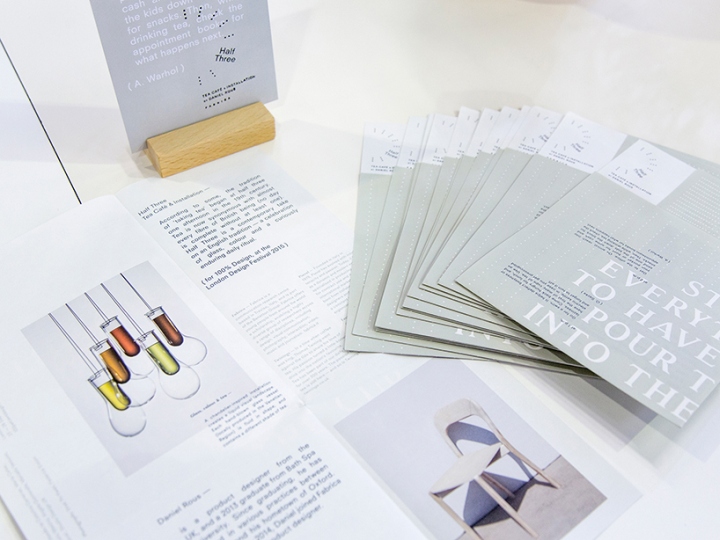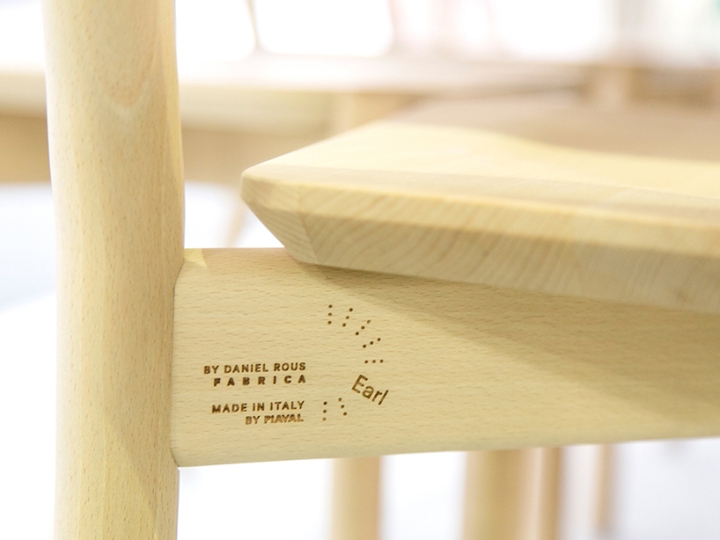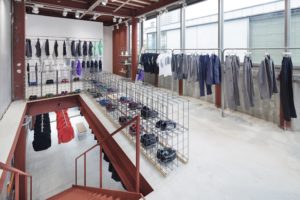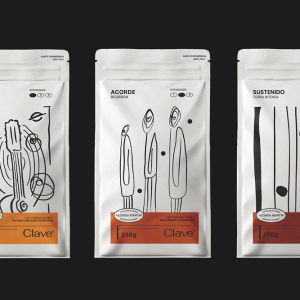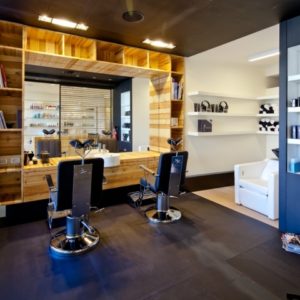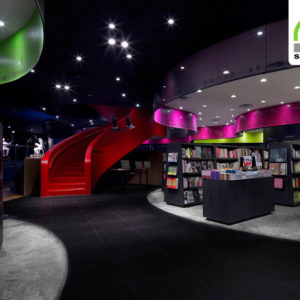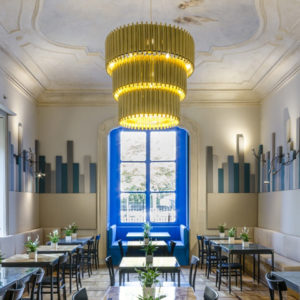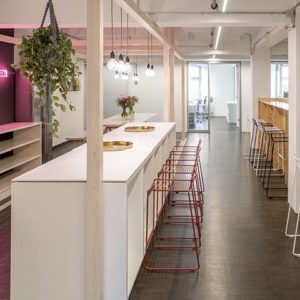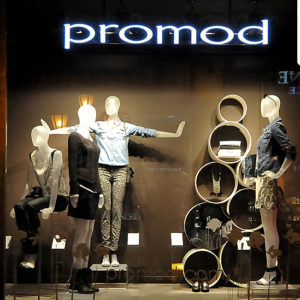


Fabrica is one of the protagonists of this year’s 100% DESIGN, the UK’s largest design trade show taking place at its new home Olympia London from 23 to 26 September 2015. The show returns with a series of specially commissioned installations exploring the central theme, Design in Colour. Each project is designed to push the creative boundaries, from concepts to processes and material capabilities.

Among them, Half Three, a Fabrica-designed tea café, a sensory experience and celebration of glass and colour and also a contemporary take on a curiously enduring English tradition. According to some, the tradition of ‘taking tea’ began at half three one afternoon in the 19th century. Tea is now synonymous with almost every fibre of British being — no day is complete without at least one.
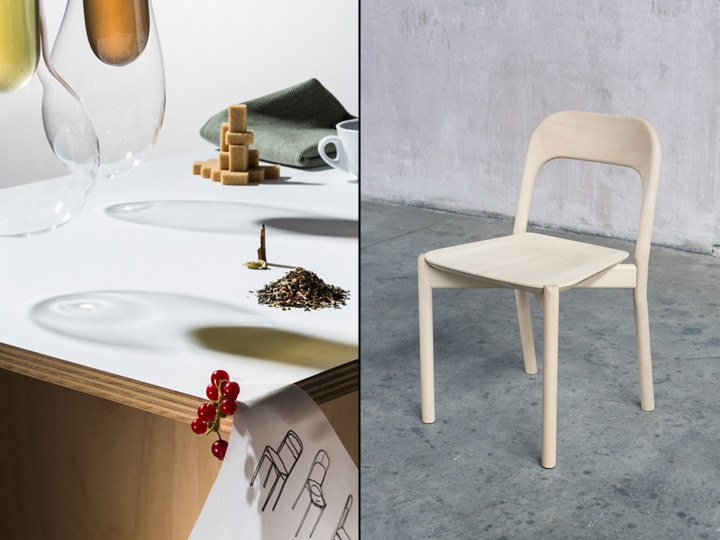
Incorporating an installation of hand-blown glass vessels, the cafe offers visitors a break from the bustle of the show to relax with a broad selection of tea. The feature is designed by British designer Daniel Rous of Fabrica and is situated in the Kitchens & Bathrooms section, with key sponsors including Tea by Twinings, materials by Formica Group and Italian furniture maker Piaval, who have produced a custom-made chair for the space.
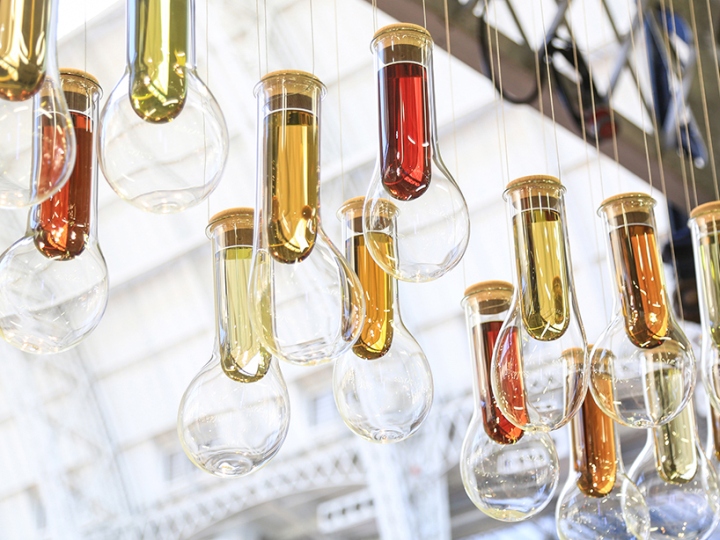
The chair, called “Earl”, (also designed by Daniel Rous) focuses on user comfort, with a back that elegantly wraps around, and sweeps effortlessly into the back legs. “Earl” is made entirely from beech with a color finish that complements the tonal range of tea visible through the cafe.
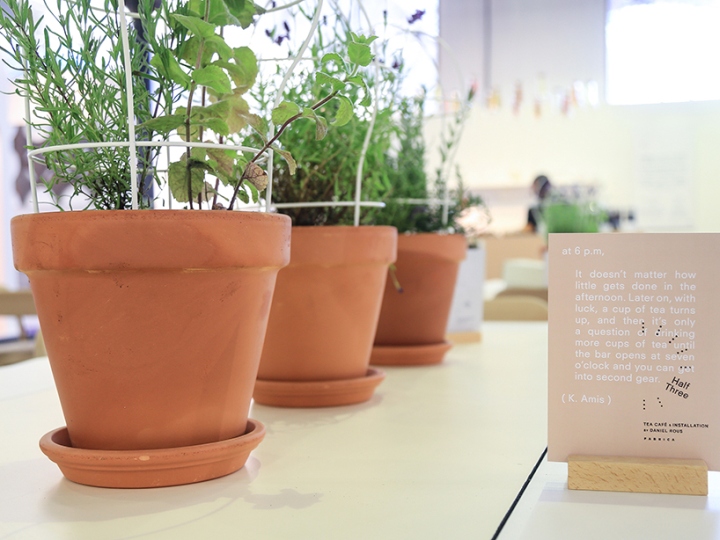
The Half Three Tea Café will see a chandelier-inspired installation hung above the bar and arranged at different heights. Each hand-blown glass vessel (locally produced in the Venetian region) contains a different shade of tea, and the fluid nature of the blown glass creates a liquid-like visual landscape as though the glass is in motion. When the pieces are illuminated, light shines through the glass, enhancing the natural color found in the teas, casting a colour spectrum through the space.

